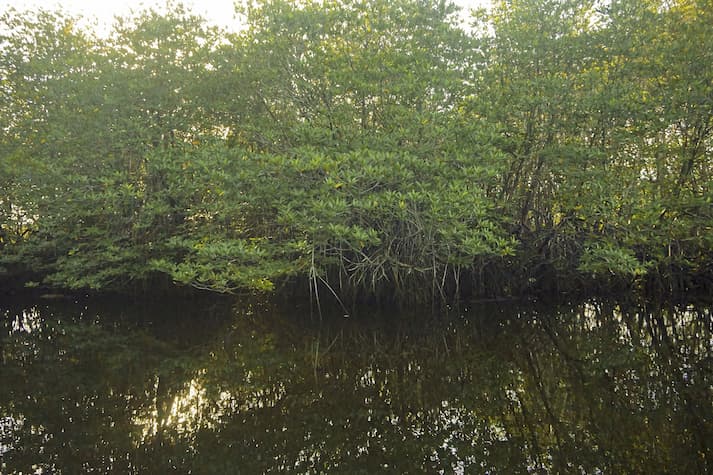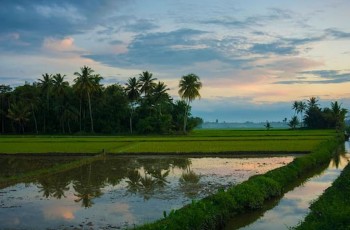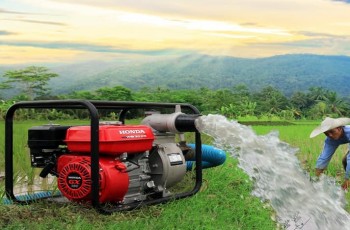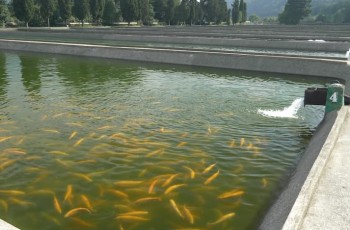Wetlands: Definition, Types, and Benefits
25 December 2023

The natural environment encompasses diverse ecosystems that play a crucial role in maintaining the balance of nature and human life. One ecosystem that is often overlooked but holds significant value is wetlands. What are wetlands?
Wetlands, or wet areas, can be found in various regions, Sobat Honda. Examples include mangrove forests and swamp areas. To learn more about wetlands, their different types, and the benefits derived from their existence, Sobat Honda can read the comprehensive description below.
What Are Wetlands?
Wetlands are areas that are either naturally or artificially waterlogged or have moist soil. These areas encompass various ecosystems, such as swamps, peatlands, and mangrove forests.
The abundant water conditions give wetlands unique characteristics and support biodiversity growth. Sufficient water makes wetlands a habitat for various plant and animal species adapting to this environment.
As previously mentioned, wetlands can also be created by Sobat Honda according to needs. Sobat Honda can use water pumps to supply the required water to achieve optimal wetland conditions.
Honda water pumps can be relied upon by Sobat Honda to create optimal wetlands. Honda water pumps are equipped with exclusive technology, reliable features, and details and are powered by commercial-grade Honda 4-stroke engines.
Read Also: How To Maintain Soil Fertility?
Types of Wetlands
Wetlands are a crucial part of ecosystem diversity. Various wetlands have unique characteristics and specific roles in maintaining natural balance, from expansive swamps to mangrove forests. Each type of wetland has its characteristics and benefits. Let's explore some of them below.
1. Peatlands
Peatlands are wetlands with soil rich in organic material formed from decomposed plant remains under anaerobic conditions, where air can't freely enter.
This peat layer grows over thousands of years and can store significant water. Peatlands are vital in carbon storage, serve as a habitat for unique species, and maintain humidity and ecosystem balance.
2. Swamp Areas
Swamp areas are wetlands that are periodically waterlogged. Swamps can form in lowlands or around riverbanks that frequently overflow. Swamp areas have exceptional water-absorbing capabilities, contributing to flood control during the rainy season. The diversity of plants and animals in swamp areas makes them essential ecosystems for maintaining balance.
3. Mangrove Forests
Mangrove forests grow in the transitional zone between land and sea. The elevated roots of mangrove trees help retain soil and sediment and protect coastlines from waves and coastal erosion. Moreover, mangrove forests house various species of fish, shrimp, and marine organisms. The biodiversity in mangrove forests creates a biological hotspot that supports marine ecosystem productivity.
4. Mineral Wetlands
Mineral wetlands are ecosystems that tend to have soil with minimal organic material and more minerals. Examples include mountainous lakes or former mining areas.
Although not as well-known as other wetland types, mineral wetlands are vital in providing clean water sources and serve as habitats for unique species adapted to their distinct environmental conditions.
5. Highland Wetlands
Highland wetlands are in mountainous regions, often in valleys between mountain peaks. The primary function of highland wetlands is water storage and provision.
Springwater originating from highland wetlands often becomes a vital freshwater source for communities downstream. Additionally, highland wetlands play a role in maintaining water availability for plants, animals, and humans in the vicinity.
Benefits of Wetlands
Wetlands are not just areas of standing water; they are also natural resources full of benefits. From crucial ecological functions to positive impacts on human life, wetlands play an irreplaceable role in maintaining the global ecosystem. Now that Sobat Honda knows what wetlands are, it's essential to understand their benefits. Let's explore them in detail here.
Read Also: Benefits Of Gardening For Mental And Physical Health
1. Biodiversity Importance
Wetlands are home to ordinary plants and animals and serve as habitats for unique and rare species. The high biodiversity in wetlands includes various migratory birds, rare fish, amphibians, and distinctive aquatic plants. It provides aesthetic and exceptional value and holds scientific and ecological research significance.
2. Potential for New Discoveries
Wetlands often yield surprises and discoveries in the scientific world. During exploration, scientists frequently find plant and animal species that have never been documented. These discoveries can significantly impact Sobat Honda's understanding of biodiversity and evolutionary processes.
3. Connection to Global Ecology
Global ecological balance heavily relies on wetland presence. Species living in wetlands often play unique roles in food chains and entire ecosystems. Disturbance or loss of a species in wetlands can affect the broader ecosystem balance.
4. Food and Livelihood Source
For some communities, wetlands provide vital food and livelihood sources. Fish and other aquatic animals living in wetlands supply essential protein for human life. Additionally, plants like aquatic vegetation and grasses in wetlands can be used as livestock feed or industrial raw materials.
5. Education and Conservation
Wetlands also hold high educational value. Sobat Honda can learn about the importance of biodiversity, ecosystem balance, and how wetland conservation supports a healthy environment. Visitors to wetlands can become advocates for nature conservation and contribute to conservation efforts.
In conclusion, wetlands are crucial in maintaining the global ecosystem and supporting various aspects of life. The preservation of wetlands is essential to sustain biodiversity, control floods, protect coastlines, and mitigate the impacts of climate change.
Sobat Honda is responsible for preserving and conserving wetlands for the environment's sustainability and the future of the coming generations. In caring for wetlands, one thing Sobat Honda can do is to keep them moist using water pumps.
As a top choice among various types of Honda Power pumps, the WB20XN offers exceptional pumping capabilities with the water volume it produces. The main advantage of this pump is its ability to provide the required water volume.
Equipped with the GX160 Honda 4-Stroke engine as its driving force, the WB20XN ensures easy startup and straightforward operation. Moreover, this engine guarantees simple operation, fuel efficiency, low exhaust emissions, and enhanced durability.
Read Also: 6 Types Of Fertile Soil Found In Indonesia
Not only that, the WB20XN is a 2-inch water pump suitable for various needs. Sobat Honda doesn't need to worry about its initial startup, as the embedded Honda OHV engine ensures a quick and easy startup process.
So, what are you waiting for? Now that Sobat Honda knows what wetlands are, Sobat Honda can easily find the best and most reliable water pump according to your needs only at Honda Power Products. Check out the specifications and prices now!

Honda Power Products Indonesia
Honda Power Products menyediakan mesin serbaguna, generator, pemotong rumput, pemotong sikat, pompa air, dan mesin tempel.



